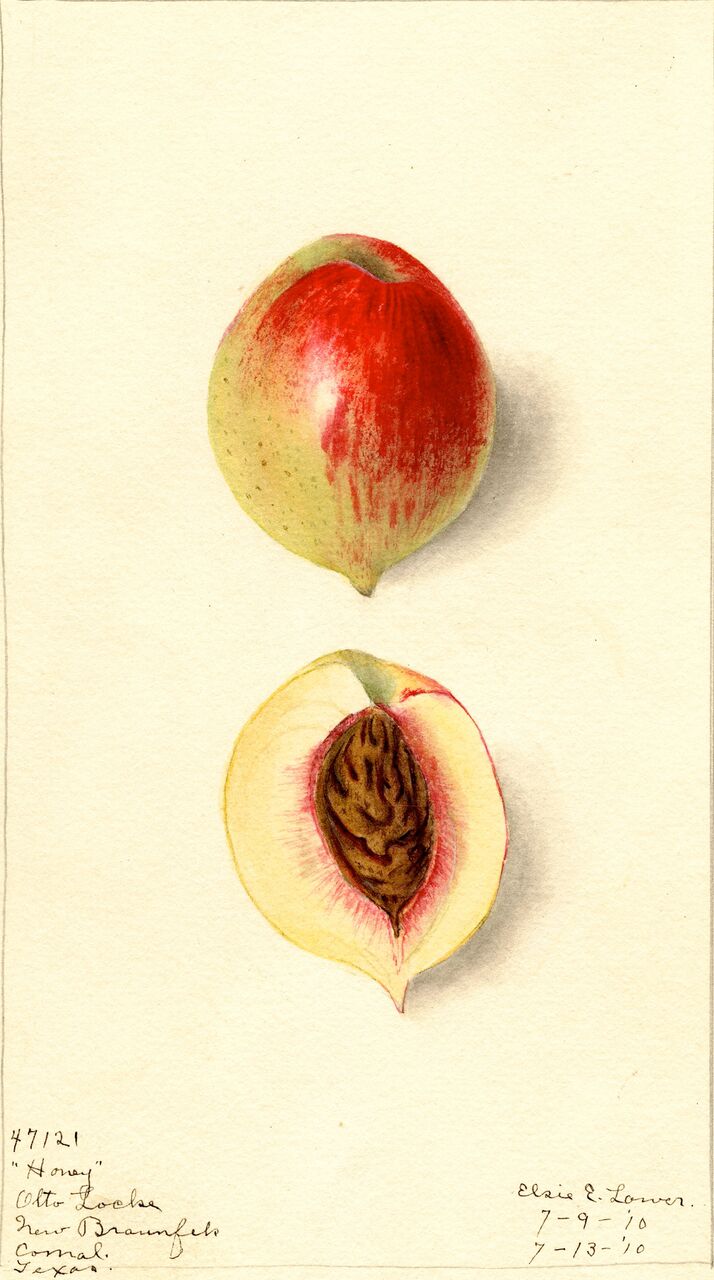 HONEY
HONEY
As its name suggests, the recommendation of this Peach was its flavor, a rich nectared sweetness. Coming ripe at the end of June, the medium sized fruit commanded high prices at markets. The fruit was oblong with a sharp recurved point. The skin was creamed colored washed with red; sometimes there was carmine mottling. A heat tolerant variety, the Honey Peach could be grown in Florida and the deep South. It first appears on nursery lists in the 1860s. The texture of the flesh was fine grained, with no stringiness. It was not so productive as other varieties, but the price it could command made it commercially viable for orchardists. Possibly extinct—not in the USDA germ plasm collection.
The origin of the Honey Peach has never been definitively ascertained. But in the 1930s a bud mutation of a saucer peach in Coachella, California, produced fruit hardly distinguishable from the Honey Peach. ("Coachella Tree may be the Answer to the Mystery of Origin of the Honey Peach," Riverside Daily Press, September 7, 1938, 3).
"Medium; oblong, with a sharp recurved point; creamy white, washed and mottle with carmine; flesh of a peculiarly fine texture and a honey sweetness; tree thrity and prolific. It is very successful in Florida, and pays handsomely as a market fruit. June 25." Atlanta Nursery Catalog 1895.
Southern Nurseries that carried the Honey Peach prior to 1920 include,
D. Beatie’s Atlanta Nursery, 1891, 1895. Cherokee Nursery, Waycross, GA 1893. Clingman Nursery & Orchard, Kiethville LA 1908. S. Downer & Sons Nursery, Fairview KY 1870. P. J. Berckmans Fruitland Nurseries, Augusta GA 1877. Franklin Davis Richmond Nurseries, Richmond VA 1869. Turkey Creek Nurseries, Macclenny FL 1906. D. Hoyt Seven Oaks Nursery, Seven Oaks FL 1890. L. Taber Glen St. Mary Nursery, Glen St. Mary FL 1894.
Image: U.S. Department of Agriculture Pomological Watercolor Collection. Rare and Special Collections, National Agricultural Library, Beltsville, MD 20705, Elsie Lower, 1910.
D. S. Shields